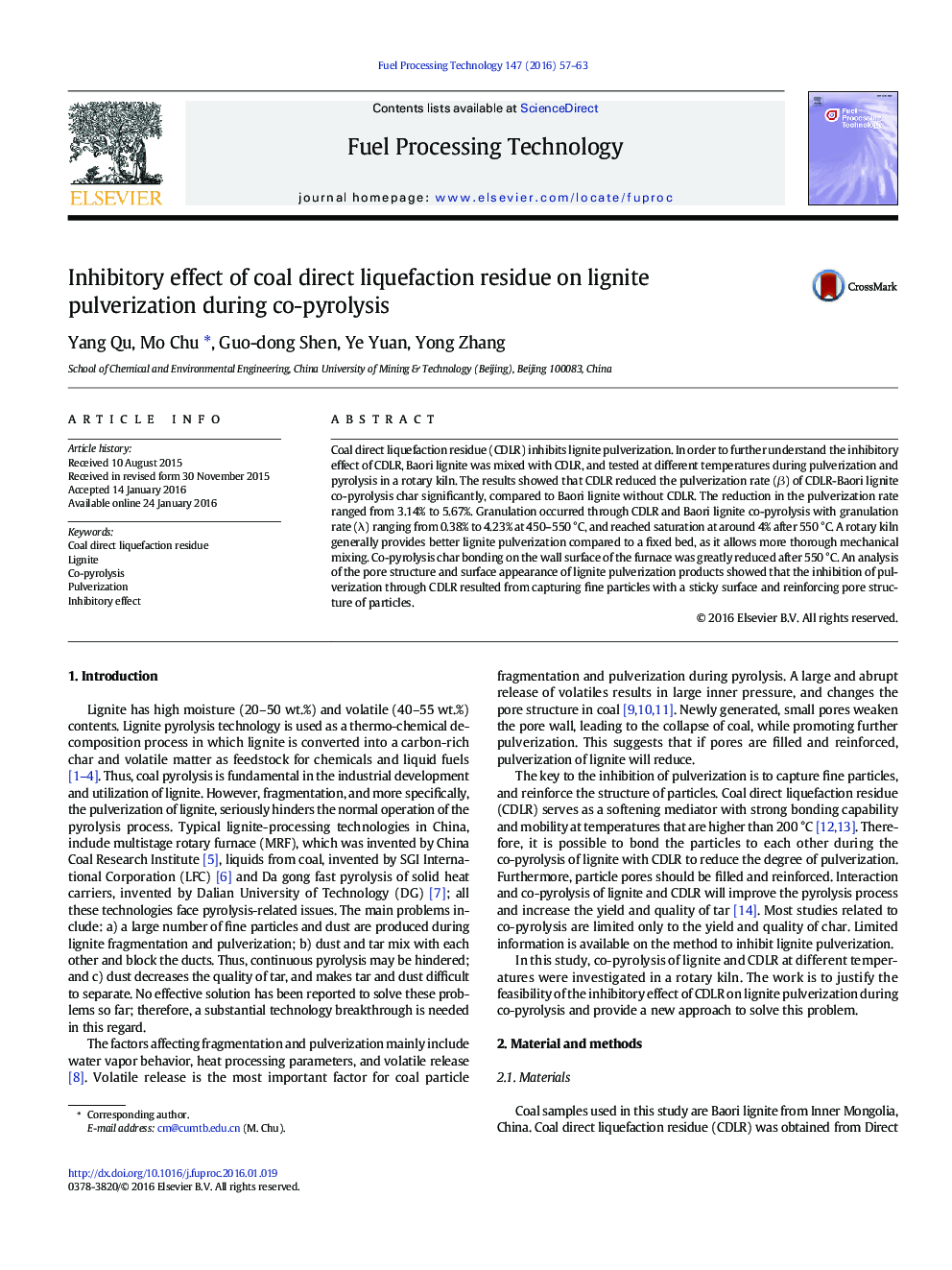| Article ID | Journal | Published Year | Pages | File Type |
|---|---|---|---|---|
| 209189 | Fuel Processing Technology | 2016 | 7 Pages |
•CDLR could decrease pulverization rate of lignite at range of 3.14–5.67% (450–650 °C).•Inhibitory effect of rotary kiln was proved better than the fixed bed.•Inhibiting factors are revealed: capturing particles and reinforcing pore structure.
Coal direct liquefaction residue (CDLR) inhibits lignite pulverization. In order to further understand the inhibitory effect of CDLR, Baori lignite was mixed with CDLR, and tested at different temperatures during pulverization and pyrolysis in a rotary kiln. The results showed that CDLR reduced the pulverization rate (β) of CDLR-Baori lignite co-pyrolysis char significantly, compared to Baori lignite without CDLR. The reduction in the pulverization rate ranged from 3.14% to 5.67%. Granulation occurred through CDLR and Baori lignite co-pyrolysis with granulation rate (λ) ranging from 0.38% to 4.23% at 450–550 °C, and reached saturation at around 4% after 550 °C. A rotary kiln generally provides better lignite pulverization compared to a fixed bed, as it allows more thorough mechanical mixing. Co-pyrolysis char bonding on the wall surface of the furnace was greatly reduced after 550 °C. An analysis of the pore structure and surface appearance of lignite pulverization products showed that the inhibition of pulverization through CDLR resulted from capturing fine particles with a sticky surface and reinforcing pore structure of particles.
